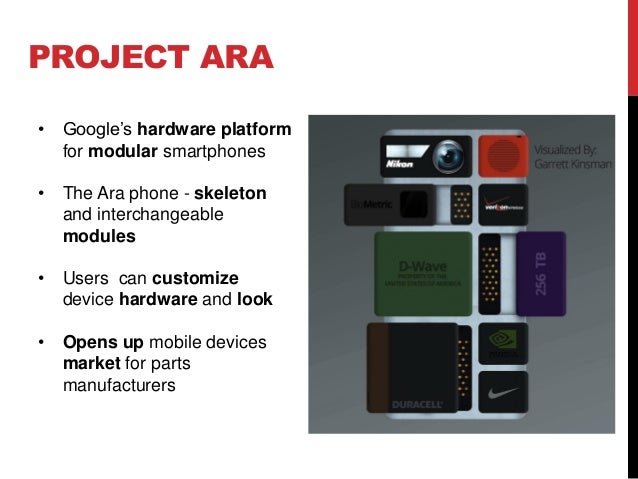The rise and fall of Google’s modular phone dream
- Get link
- X
- Other Apps
Modular phones had a brief flirtation with popularity over the last few years. Between the Moto X, LG G5 and Google’s Project Ara, a couple notable companies made real stabs at modular smartphones, only to be met with a resounding meh.
We can write off the Moto X and LG G5 as phone companies trying to keep up with the fads, but Google’s Project Ara always felt like something a little more ambitious. A completely modular phone would have revolutionized the industry, had it ever actually worked.

Google has killed Project Ara, its ambitious plan to make a modular smartphone, with parts you could replace as they wore out or became obsolete. But the man who launched it isn’t giving up on the idea. Dan Makoski, who founded Ara, is now making modular phone cases—rather than whole phones—with a company called Nexpaq.

Nexpaq already makes phone cases that can be augmented with any of a dozen modules. These can add battery life, increase storage, and add things like temperature or air-quality sensors. The Hong Kong-based firm got its start as a Kickstarter project, raising about $280,000 from backers. It has since raised an undisclosed amount from the venture-capital arm of Maxim Integrated, a large semiconductor maker.
Makoski, who created Ara while he was head of design at Google’s Advanced Technology and Products Division (ATAP), has now joined Nexpaq as its head of design and community. His goal: to bring what he calls “mass individualization” to the market. The idea is to turn mass manufacturing (“making one thing a million times”) on its head, and instead make products that each user can customize themselves.
That was supposed to happen at Google. One Ara mobile-phone frame would be the foundation for any number of custom modules. It would disrupt the smartphone product cycle—each frame would last longer—while creating a market for third-party modules. It would be like an app store for phone hardware. But the project, begun in 2012, faltered and was shut down this year—reportedly because Google wanted to “streamline [its] hardware efforts,” according to Reuters.
If Google couldn’t bring a modular phone to the market, what makes Nexpaq—an upstart that’s promising to deliver its products in the first quarter of next year, after missing shipping deadlines—any different? Chief executive Jason Ko says it’s down to user psychology. “Trying to convince a user to throw away their phone and buy a new one is much harder than that same user buying an accessory,” he says. And firms like LG already have well reviewed modular smartphones on the market.
Still, Makoski sees Nexpaq as his best shot at getting his vision of a customizable phone to the market. “When I … actually held a Nexpaq case and Batpaq [the firm’s battery pack product] for the first time, I immediately knew that I wanted to partner,” he said. “The industrial design, software integration, developer tools and ability to actually ship product were all much farther along than anyone else in the modular space.”
- Get link
- X
- Other Apps
Popular posts from this blog
What is Muzo?
Using Billion Sound Technology (BST), the Muzo smart acoustic device attaches to any smooth surface and generates dynamic, realistic sounds, while promising to cancel vibration and outside noise. This way, the company claims that Muzo can turn almost anything into a crystal clear acoustic environment, including windows, walls, and desks and other furniture; improve the quality of your sleep, and even help protect your speech privacy. And it promises to do all of this over three steps: Position Muzo toward the noise and reposition if needed. Gently press the large button on the surface to select your ambient noise (or, use the noise-canceling technology by itself). Rotate the button to adjust soundtrack volume. Together, the company tells us that Muzo’s noise-blocking technology can create a “personal zone creator” that can work as an alternative to sleep aids and costly sound machines. Muzo sure sounds cool, but is it worth the money? Is it even a feasible con...
Pup Smart Scanner:
Using a scanner is usually not the most user-friendly experience you'll ever have. Since you'll have to find your scanner, which is probably under about 5 boxes. You then have to connect it to your computer, which the drivers are probably either not installed or out of date. Then you have to put each individual document you want to scan into the device and wait about 2 minutes each. The Pup is a super simple scanner that works just like a camera, and takes just seconds to scan each item you want digitized. How it works is, you select the settings beforehand on how you'd like to scan it, and what you'd like to do with it once it's scanned, then you hold the Pup Smart Scanner above what you'd like to scan, and lasers will square off and show you exactly what you're about to scan. Then just press the button to initiate the scan, and a flash will illuminate the document, and it will scan it within seconds. Perfect for keeping your child's dr...
Comments
Post a Comment